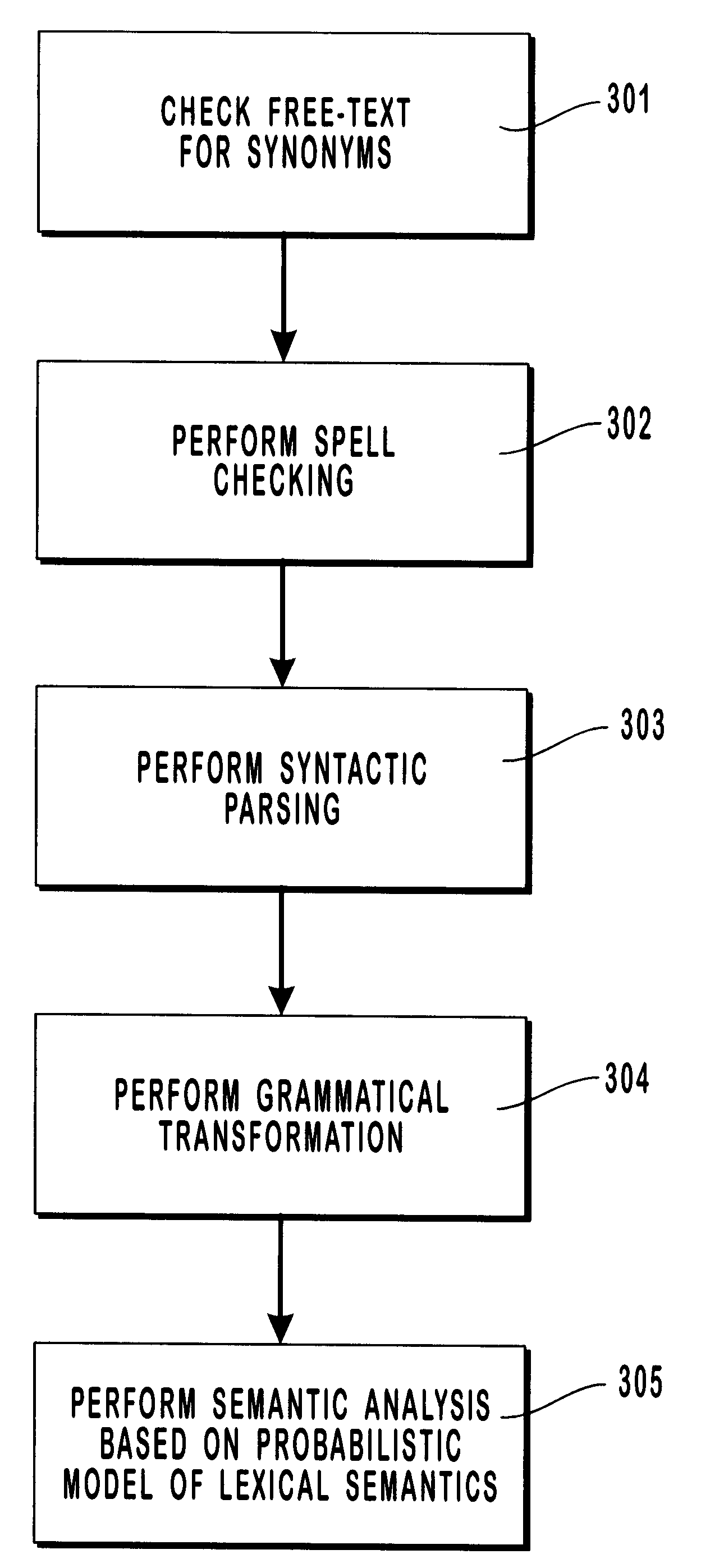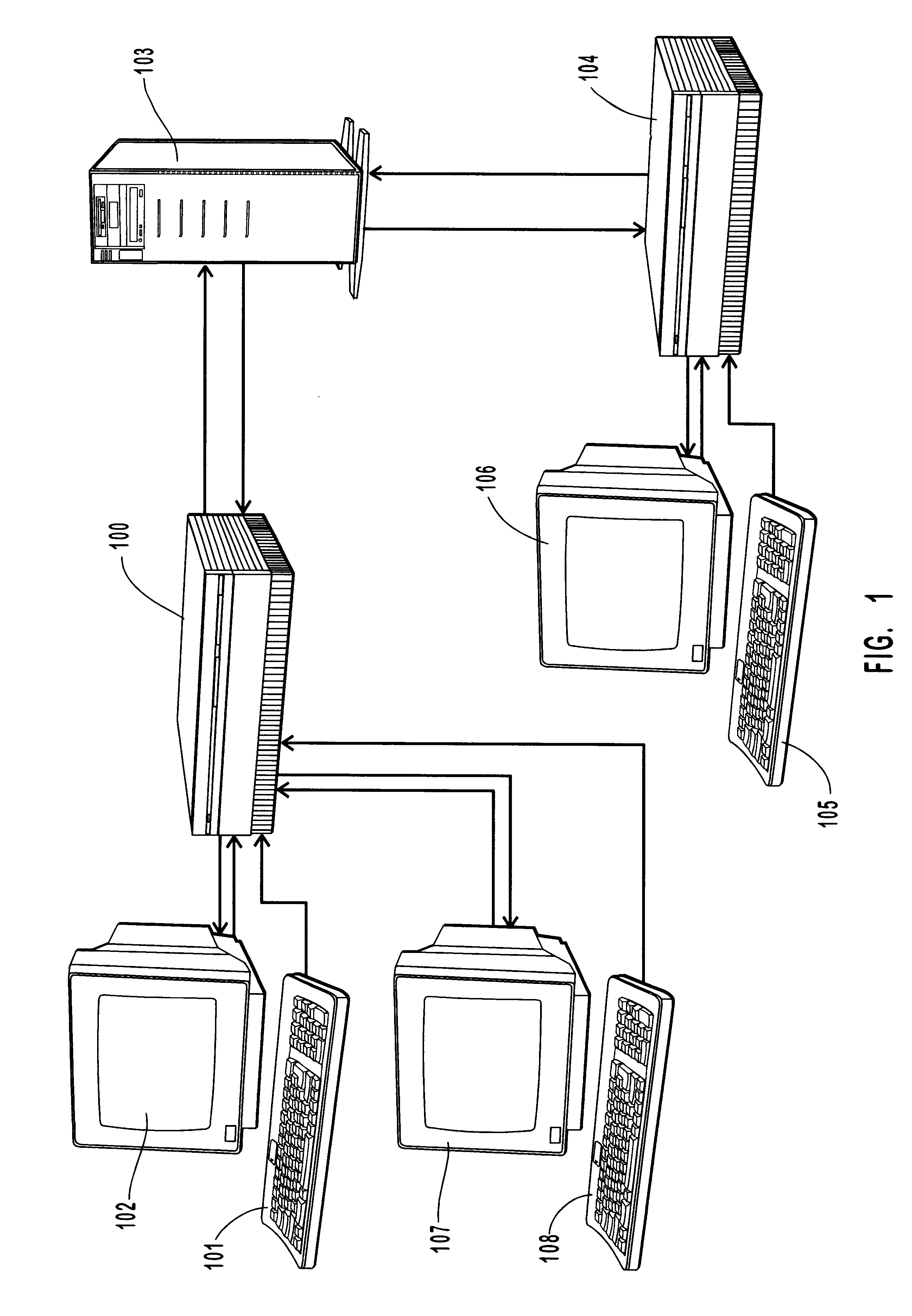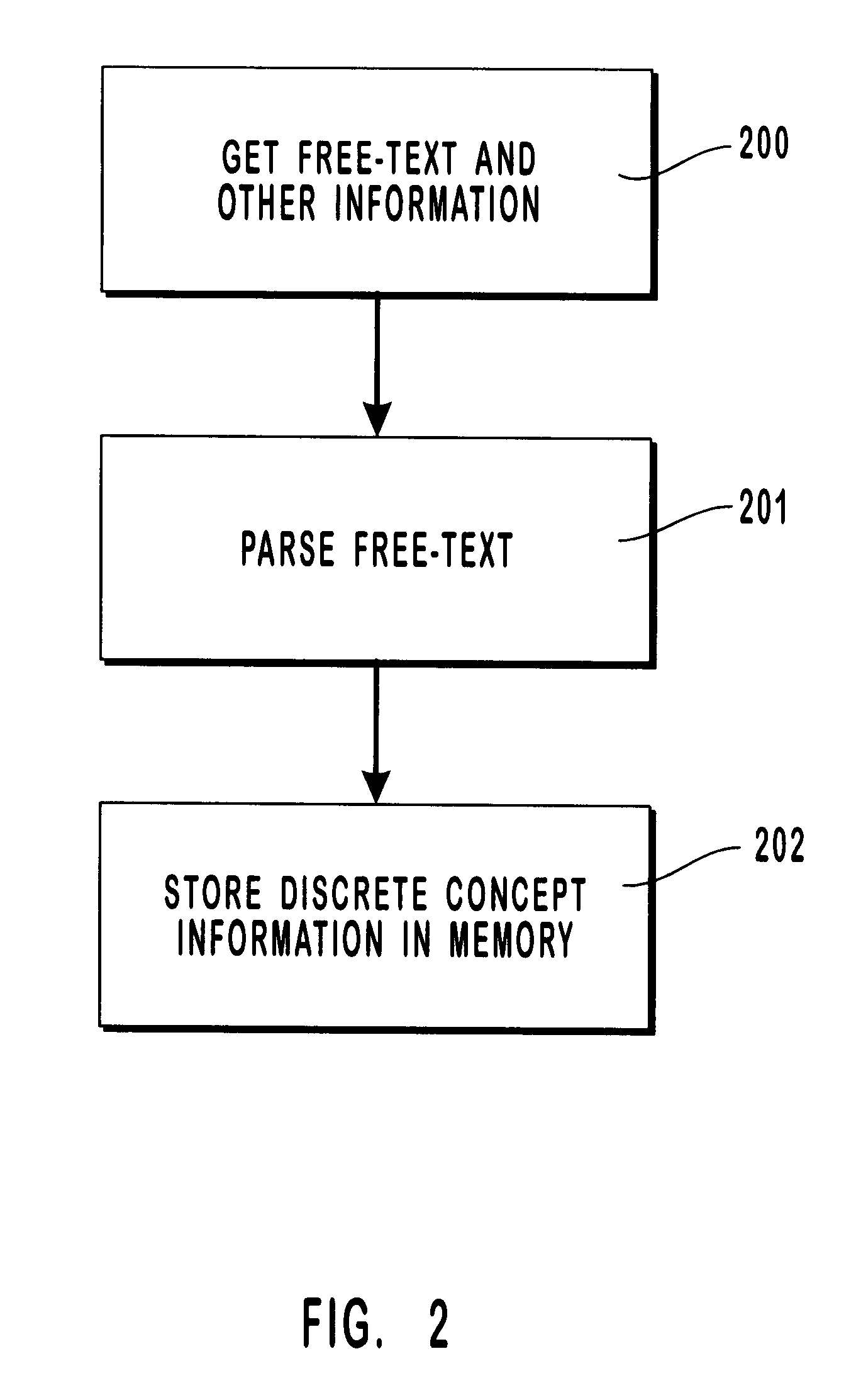Probabilistic method for natural language processing and for encoding free-text data into a medical database by utilizing a Bayesian network to perform spell checking of words
a natural language and probability theory technology, applied in the field of natural language understanding, can solve the problems of data being largely inaccessible to computer programs, not readily accessible to human readers, and one of the most difficult problems of artificial intelligen
- Summary
- Abstract
- Description
- Claims
- Application Information
AI Technical Summary
Benefits of technology
Problems solved by technology
Method used
Image
Examples
Embodiment Construction
of the Parsing Process
As mentioned, the interpretation of the free text is carried out by the routine "parse-sentence". This routine calls a sequence of processes, as shown in FIG. 3, including (in order) a synonyms processor, semantically enhanced spellchecker, syntactic parser, transformational processor, and semantic analyzer. These are described below:
1--Synonyms: (step 301 in FIG. 3). The synonyms processor examines the input text, looking for words and phrases that might be abbreviations or variants on more standard usages, as well as common misspellings, and replaces them with the standard forms. For instance, "aaa" is a common abbreviation for "abdominal aortic aneurysm", and "a-fig" abbreviates "atrial fibrillation". Accordingly, the synonyms processor may take as its input a single word, an abbreviation, or a several-word phrase, and produces as its output a single-word or several-word phrase. The source code for the synonyms processor is in the file "synonyms.lisp"; the m...
PUM
 Login to View More
Login to View More Abstract
Description
Claims
Application Information
 Login to View More
Login to View More - R&D
- Intellectual Property
- Life Sciences
- Materials
- Tech Scout
- Unparalleled Data Quality
- Higher Quality Content
- 60% Fewer Hallucinations
Browse by: Latest US Patents, China's latest patents, Technical Efficacy Thesaurus, Application Domain, Technology Topic, Popular Technical Reports.
© 2025 PatSnap. All rights reserved.Legal|Privacy policy|Modern Slavery Act Transparency Statement|Sitemap|About US| Contact US: help@patsnap.com



